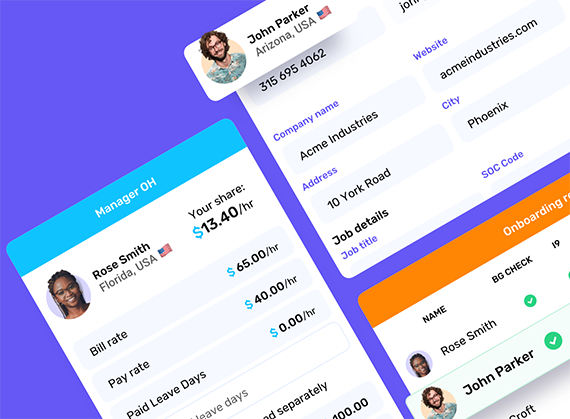There is a new trend in higher education; contract and temporary staffing. This trend is already established in many industries, and companies move to outsource their teams whether they are in banking, technology, healthcare, or another field.
As COVID-19 continues to make an impact on occupancy levels at our nation’s higher education facilities, there is less need for full-time staff to take care of facilities and students. How do these contracts work, and how can an employer of record (EOR) help?
COVID and the Higher Education Workforce
Inside Higher Ed reports that COVID did a number on payroll a number of our nation’s centers of learning. For example, in March 2020:
- University of Pennsylvania workers were still getting paid even when COVID-19 shut down the campus.
- Stanford University staff had guaranteed pay whether they ended up working or did not. The organization reported that most staff ended up home with pay.
- Harvard University paid its dining workers even after the dining halls were shut down for social distancing.
This situation creates an undue burden on the smaller facilities that lack the endowments of their “big name” competitors. Smaller organizations, such as Quinnipiac University, had to cut salaries to cope with the financial strain of the crisis. Santa Clara University reports that they lost up to $13 million in room and board revenue alone. By May, cash-strapped organizations were resorting to layoffs and furloughs.
However, contract staffers brought in to staff the dining rooms of some of these facilities were laid off during the COVID-19 shutdown. For organizations that leveraged contract and temporary workers, the financial burden was lessened along with the risk during a time of crisis.
Benefits of an EOR for Contract Staffing in Higher Education
Higher education organizations have leveraged contract staffing in lower-level positions. Interestingly, some colleges and universities are now outsourcing adjunct faculty positions. Inside Higher Ed reports that community colleges in Michigan are not outsourcing recruiting, hiring, and managing adjunct staff. It’s an interesting adaptation of the hiring model for the tumultuous times we’re living in.
Using an EOR to provide adjunct faculty roles is also increasing. This model is ideal in many ways because most colleges and universities split their sessions and don’t work all year. So, an adjunct can be hired for a term or the full school year, but then be released during the summer session. However, the management of these contracts is technically quite complex and subject to a high level of risk from a regulator perspective. EORs can handle sourcing, hiring, and management of these resources while taking on the nuances of the associated tax and labor laws. While the idea may be controversial, contracting all levels of your workforce in a higher education help employers avoid the mandatory contribution (sometimes as high as 17% or more) to the state employee retirement form. Private employers (in this case, the EOR) do not have to contribute in most states. One college reported that this type of arrangement saved their college at least $250,000 in the first year alone.
With the latest COVID variant again making the rounds, colleges and universities should consider all their hiring options. FoxHire is a strong resource to our higher education clients. Talk with our team today to find out how we can help your institution.






